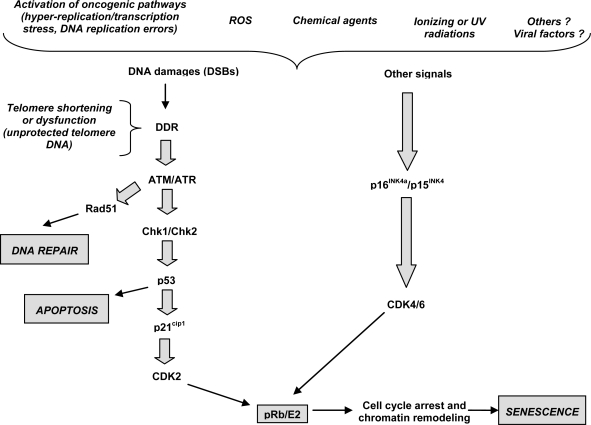Figure 2.
The proposed molecular mechanisms of cellular senescence. Oncogenic stress result in DNA damages as double strand breaks (DSBs) that lead to activation of ATM/ATR kinases. This leads to stabilization of the Rad51 repair protein needed for DNA DSB repair. Besides DNA repair induction, cooperative action of ATM/ATR, ARF and Chk1/Chk2 and p53 is crucial for the induction of either apoptosis or cell cycle arrest and induction of senescence. Another possibility is that other factors such as reactive oxygen species (ROS) or other physical, chemical of viral agents could induce the accumulation of DNA damages or activate, by alternative mechanisms, the p15INK4b/p16INK4a cascade. All known senescence pathways converge at the level of activation of CDKIs (p15INK4b, p16INK4a and p21Cip1) that keep the pRb protein under its active form. The pRb inhibits E2F and prevents the expression of growth-promoting genes for cell cycle exit. Furthermore, pRb recruits growth-promoting genes into a facultative chromatin structure for permanent silencing and growth arrest.

